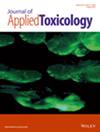A Preliminary Quantitative Risk Assessment for Inhalation Exposure to Glutaraldehyde
Abstract
Glutaraldehyde (Chemical Abstracts Service [CAS] registry number 111-30-8) has various occupational uses and is associated with adverse health effects including respiratory tract irritation, asthma, and chronic obstructive pulmonary disease. A quantitative risk assessment was conducted to evaluate the likelihood of adverse health effects associated with differing levels of occupational inhalation exposure to glutaraldehyde. Dose–response models were fit to data from a 2-year glutaraldehyde inhalation exposure bioassay conducted by the National Toxicology Program. The benchmark concentration lower bound values of 32 and 44 parts per billion (ppb) were based on bioassay data for female rats and mice that developed squamous epithelium inflammation and respiratory epithelium squamous metaplasia, respectively. These values were used as a point of departure to determine exposure levels relevant to the occupational setting. Extrapolation from rodents to humans assumed a 40-h workweek and an 8-fold uncertainty factor to account for interspecies and interindividual variability. Adjusted benchmark lower bound concentrations of 3 and 4.1 ppb were calculated for inhalation exposure to glutaraldehyde using the endpoints observed in rat and mouse models. Due to the extrapolation parameters used in deriving this result, these findings have applicability for exposure to glutaraldehyde in the occupational setting.

 求助内容:
求助内容: 应助结果提醒方式:
应助结果提醒方式:


